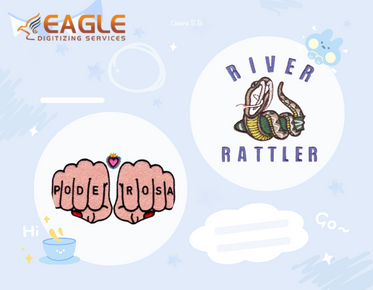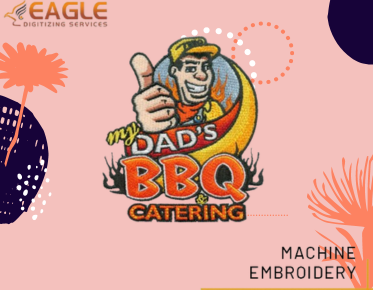Choosing the Best Format for Embroidery Digitizing
Embroidery digitizing is a crucial process that transforms artwork into a format that embroidery machines can understand. This process involves converting designs into digital files that guide the machine on how to stitch the design onto fabric. The choice of file format is essential as it determines the compatibility and quality of the final embroidered product.
Understanding Embroidery File Formats
Embroidery file formats are specific to the brand and model of the embroidery machine being used. Each machine has its own language, and the file format acts as a translator between the design and the machine. The most common formats include Tajima (DST), Brother (PES), and Melco (EXP), among others. At Eagle Digitizing, the default format provided is Tajima (DST), but they can also supply other formats like EMB, CND, EXP, DSB, PXF, and POF upon request without additional cost【4:0†source】.
Why Tajima (DST) is Popular
The Tajima (DST) format is widely used due to its compatibility with a large number of embroidery machines. It is a stitch-based format, meaning it contains information about the stitch types, lengths, and sequences, making it versatile for various designs. This format is preferred by many professionals because it ensures high-quality output and is supported by most commercial embroidery machines.
Choosing the Right Format for Your Needs
When selecting a format, consider the specific requirements of your embroidery machine. If you are unsure, consult your machine's manual or contact the manufacturer for guidance. Additionally, if you are working with a digitizing service like Eagle Digitizing, they can assist in converting your design into the appropriate format for your machine【4:0†source】.
Factors to Consider When Selecting a Format
Machine Compatibility
Ensure that the format you choose is compatible with your embroidery machine. Using an incompatible format can lead to errors in the stitching process or even damage the machine.
Design Complexity
Complex designs with intricate details may require specific formats that can handle a higher level of detail. Formats like EMB are often used for more detailed designs as they support a wider range of stitch types and colors.
File Size and Storage
Some formats result in larger file sizes, which can be an issue if your machine has limited storage capacity. It's important to balance the quality of the design with the file size to ensure smooth operation.
Working with Professional Digitizing Services
Engaging a professional digitizing service can simplify the process of selecting the right format. Services like Eagle Digitizing offer expertise in converting designs into the optimal format for your needs. They provide a range of services including embroidery digitizing, ensuring that your designs are ready for production with minimal hassle【4:7†source】.
Future Trends in Embroidery Digitizing
As technology advances, we can expect to see new formats and tools that enhance the digitizing process. Innovations in software and machine capabilities will likely lead to more efficient and detailed embroidery options. Staying informed about these trends can help you make better decisions for your embroidery projects.
In conclusion, choosing the right format for embroidery digitizing is essential for achieving high-quality results. By understanding the capabilities of your machine and working with experienced digitizing services, you can ensure that your designs are accurately translated into beautiful embroidered products. As the industry evolves, keeping an eye on emerging technologies and formats will be key to staying ahead in the world of embroidery.



.png)